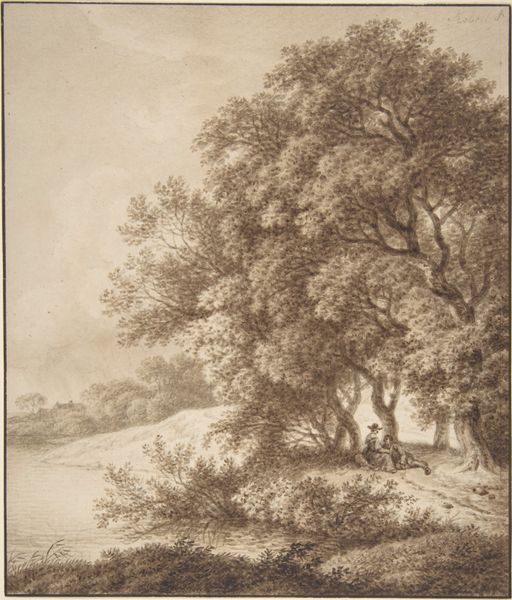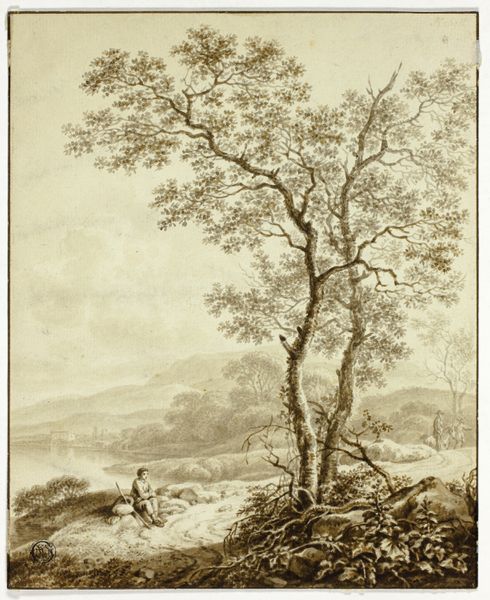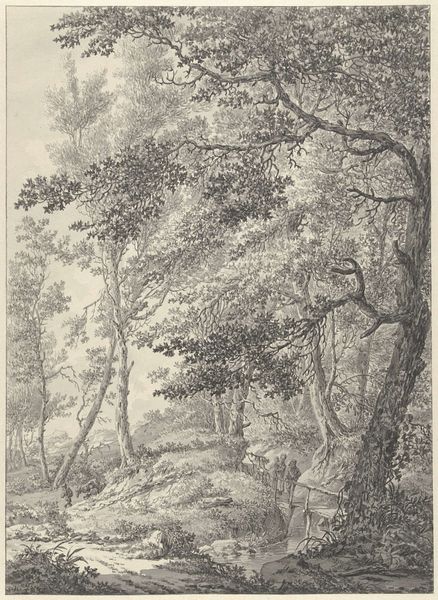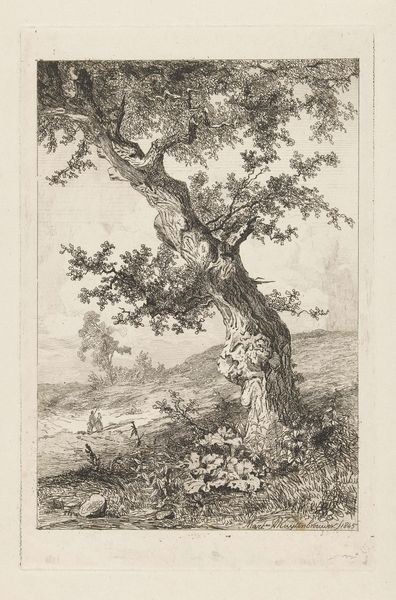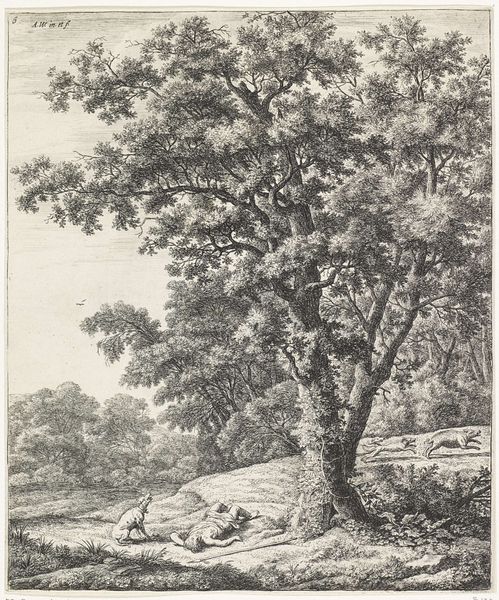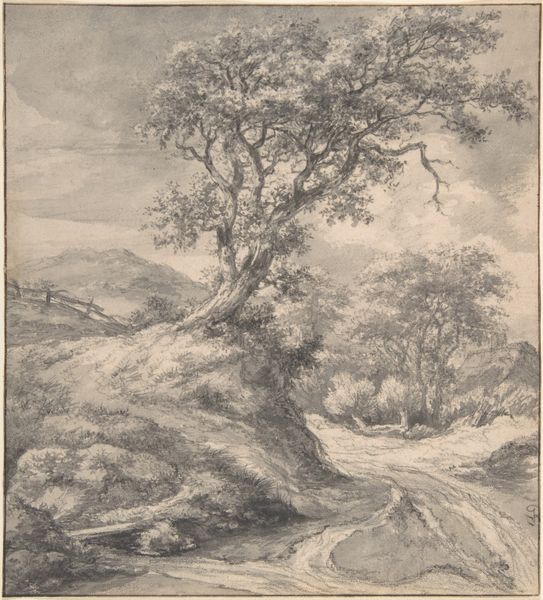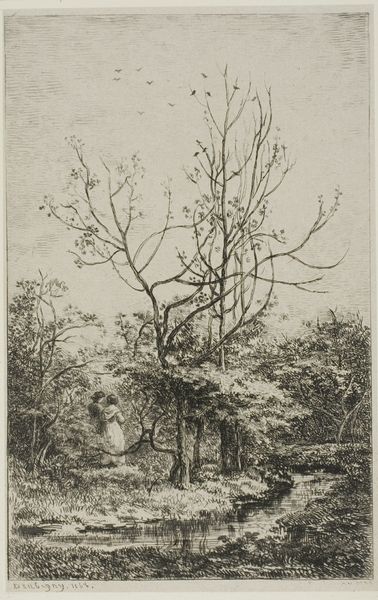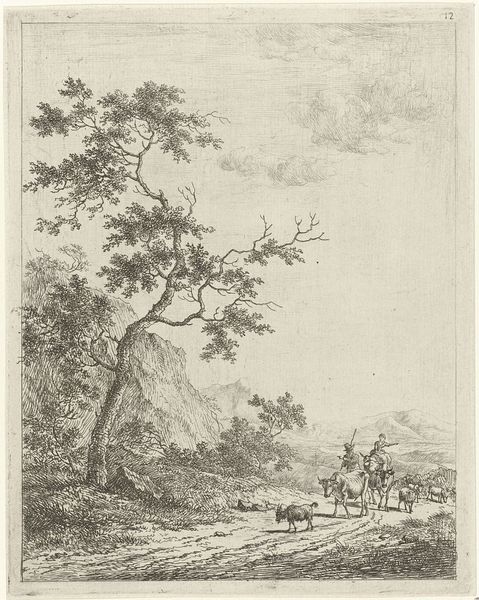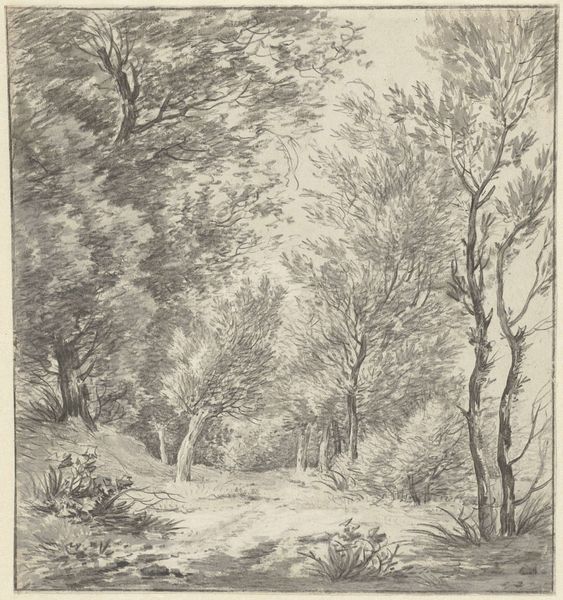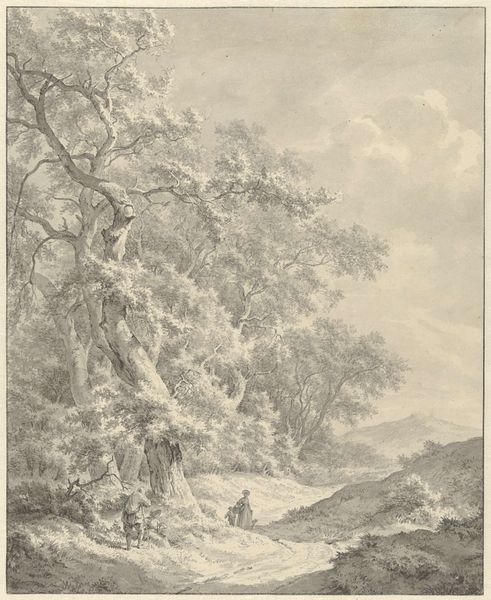
Dimensions: sheet: 7 11/16 x 6 5/8 in. (19.5 x 16.8 cm)
Copyright: Public Domain
Curator: Standing before us is Ferdinand Kobell's "Landscape with Wayfarers," created between 1740 and 1799. It’s a pencil and charcoal drawing. The interplay of light and shadow immediately draws you in, doesn't it? Editor: Absolutely. There's a strong sense of solitude, or perhaps reflection. The figures are so small within the expansive landscape. It makes you think about their place in the world, their journey... and perhaps, even, the burdens they carry. Curator: And note the way the composition guides your eye. Kobell uses the trees and the path to lead us deeper into the scene. The materiality is rather subdued; the rough texture created by the charcoal adds to its appeal, which speaks to a print-making process common at the time. Think about how the relatively common media—pencil and charcoal—enable the replication of the image, creating a shared experience and an art for the masses. Editor: Yes, it democratizes the artwork, placing it outside the exclusive domain of oil paints or sculpture. But what of these "wayfarers"? They're clearly working-class, evidenced by their worn clothing and the tools they carry. Are they free agents, traveling the countryside, or are they displaced people? Are they seeking opportunity in a society structured on inequality? Curator: Considering the historical context, their economic reality was likely harsh. This was an era marked by vast social divides and rural poverty, after all. One must consider what role artistic patronage might have had, since the patronage would often come from elite members of society, such an artistic perspective is certainly something to keep in mind. Editor: Indeed. It prompts the question: what is Kobell attempting to communicate to a possibly privileged audience? Is this image meant to romanticize the hard lives of these workers, or does it provide a social commentary about land usage and ownership? Who owned the lands that the wayfarers journey across? Curator: Those are very crucial considerations when thinking about the artistic production in that time period. I would even propose to look at how these drawings were then turned into prints. And how such means of artistic reproduction allowed for a certain distribution in society. This is definitely related to cultural power. Editor: It's more than just pretty scenery then. It serves as a visual document to an unequal time and makes us rethink the romanticization of the landscape. Even today we deal with the implications of class difference and worker's rights. So in truth, we have only exchanged certain masters for other more abstracted ones. Curator: This is precisely the kind of thoughtful connection that studying art from a materialist point of view offers us. Thank you for sharing these important, relevant remarks! Editor: Likewise! Examining the historical and societal dimensions can broaden our understanding and give resonance to works that at first may appear simple or "scenic".
Comments
No comments
Be the first to comment and join the conversation on the ultimate creative platform.
